The evolution of wars and armed conflicts: from Desert Storm to Enduring Freedom
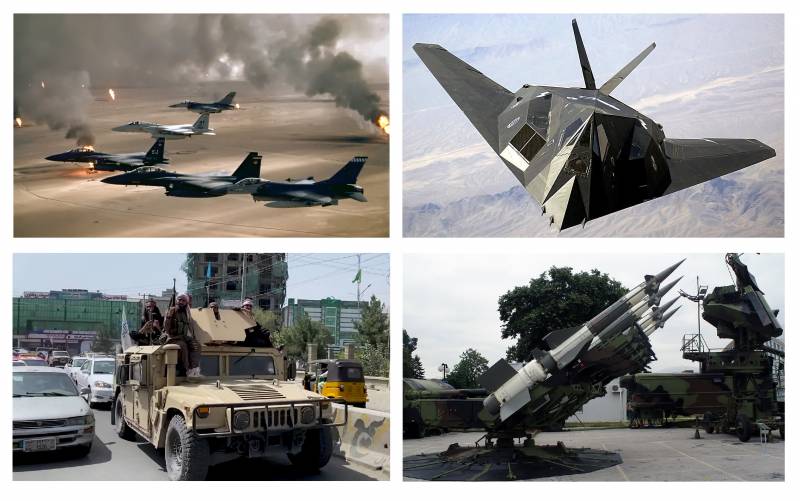
“Generals are always preparing for the last war.”Sir Winston Churchill
All wars and armed conflicts are different from each other in one way or another. Technologies, weapons, tactics change, even people change - they may differ in physical capabilities, intellectual potential, ability to survive and motivation. In addition, wars can differ in the geography of the theater of operations (theater of operations), duration, number of participants - warring parties, and many other factors.
Every war or armed conflict becomes the object of close study to determine what mistakes were made by the warring parties during it, what new weapons, tactics and strategies were used. All this has a significant impact on the construction of the armed forces, both states and socio-political organizations - “freedom fighters”, including those banned, including in Russia.
Of course, every war or armed conflict is analyzed with a view to preparing for future wars, primarily large-scale ones. Accordingly, it is necessary to understand that it is really possible to correctly assess the contribution to victory of a particular type of weapon, of a particular strategy or tactic, only in the conditions of a full-scale war with a comparable enemy, that is, information about the effectiveness of a particular weapon or tactic obtained during bombing of Libya will not necessarily be relevant to how the same weapons or tactics will perform in a war with China.
Nevertheless, in our information-dependent times, a kind of “marketing effect” arises when the degree of influence that a particular weapon has on the course of hostilities is largely exaggerated by the media and marketers of the company producing it - remember "the sect of witnesses of Saint Bayraktar". However, the opposite is also true, any type of weapon can be discredited by the media and even by the armed forces themselves, like - "time tanks passed".
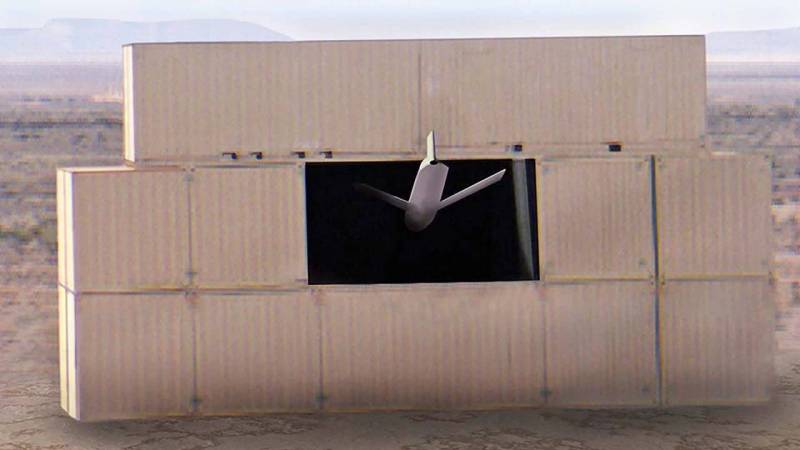
A bomb/rocket flies into a window/chimney (underline as appropriate), as accessible and visual evidence of the superiority of high-precision weapons
Let us consider, using the example of wars and armed conflicts over the past 25 years, how views on which weapons had a significant impact on the course of hostilities and influenced the subsequent rearmament of the leading armies of the world have changed, and what major military conflicts have occurred during this time.
"Desert Storm" (1991)
Operation Desert Storm, which began in 1991, became a benefit for the Air Force. Yes, a ground operation took place, but in fact it was carried out with full strategic air supremacy provided by the US Air Force and NATO.
Yes, General Giulio Douhet was clearly spinning in his grave like a hula hoop - if only his predictions had come true, a fairly powerful state in military terms was actually defeated from the air. The most striking and memorable examples of weapons during this war were Tomahawk cruise missiles (CR), F-117A stealth fighters and high-precision “flying into the smokestack” aerial bombs.
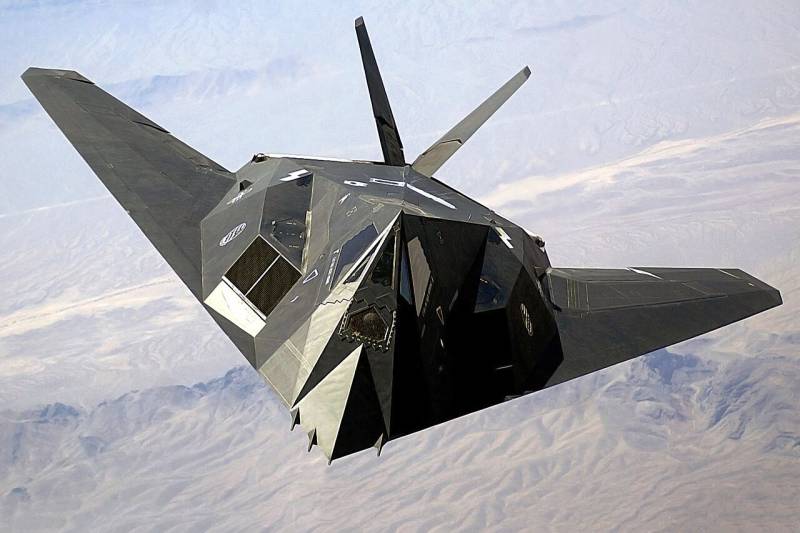
The influence of the F-117A stealth fighters on the course of the war in Iraq was not as important as it was shown in the information field
It is characteristic that during Desert Storm, according to the Summary Report on Air Forces in the Gulf War, only 297 Tomahawk missiles were fired, of which 282 successfully hit their intended targets, 6 missiles failed immediately after launch , and the launch of 9 missiles did not take place due to failures on board the carrier ship. Most of the used aviation The anti-Iraq coalition ammunition was still unmanageable.
The results of Operation Desert Storm most likely influenced the fact that in the United States and other NATO countries the emphasis was significantly shifted to aviation, to the detriment of ground forces - “the time of tanks is over”, is not it?
The result we are seeing now in Ukraine is a shortage of conventional “stupid” shells, a lack of tactics to break through layered fortified defenses. Of course, if Ukraine had strategic air supremacy, like the United States has in the skies over Iraq, then perhaps everything would be different, the question is different, is it even achievable in a confrontation with not only equal opponents, but at least comparable ones? And not in the case when “Mike Tyson beats a fifth-grader,” and the “fifth-grader” also received a hefty bribe for his defeat (in the person of individual generals of the Iraqi army).
Armed conflict in Chechnya (1994)
Civil war is a bleeding ulcer on the body of the country, perhaps the limit beyond which the irreversible collapse of the country would begin. The armed conflict in the Chechen Republic, which began in 1994, at a time when our armed forces were weakened as much as possible by perestroika. Here one can hardly look for theories of future victories; rather, it was about survival, about preserving the remnants of the armed forces and creative processing of the experience of a limited contingent of Soviet troops in Afghanistan.
However, there is one point that cannot be ignored - the destruction of the separatist leader Dzhokhar Dudayev with the help of high-precision ammunition aimed at a satellite phone signal identified by the Russian special services, at least this information appears in open sources. Wonderful, almost canonical example of so-called VIP terrorism.
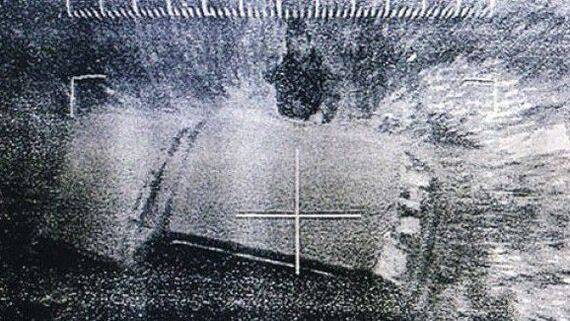
Presumably, an image from the homing head of a precision-guided munition, obtained a split second before the explosion that killed the leader of the Chechen separatists Dzhokhar Dudayev
Unfortunately, this experience was not extended to other enemies of Russia. – the killer of Russian peacekeepers, former Georgian President Mikheil Saakashvili, is alive, the organizers of the bloody coup in Ukraine in 2014, the consequences of which we are still dealing with, are alive, and Parsley-Zelensky and his henchmen are alive, but everything could have turned out differently...
"Allied Power" (1999)
Another example of the “triumph of Western democracy,” when a prosperous country was mercilessly and with impunity driven into the Stone Age, however, the scale of hostilities here was much less than in Iraq.
During Operation Allied Force, which began in 1999, the US military fired 218 Tomahawk missiles. In general, the course of Operation Allied Force only convinced the United States and NATO countries of the correctness of their chosen course - this time victory was achieved without a ground operation at all - exactly according to the behests of General Giulio Douhet.
However, there was one interesting episode in this war - namely, the destruction of the American F-117A stealth fighter by the Soviet S-125 Neva anti-aircraft missile system (SAM). Considering the advanced age of this air defense system, it turned out to be a good slap in the face for the United States. It is possible that it was the loss of the F-117A in Yugoslavia, combined with the high cost of their operation, that led to the removal of the F-117A from service back in 2006, although previously they were supposed to be in operation until 2018 - they would have had time to do so in Afghanistan and Libya fight.


The remains of the F-117A stealth fighter in the aviation museum in Belgrade and the Soviet S-125 Neva air defense system that shot it down
It is impossible not to note the overall minimal losses among NATO countries, only two fighters - the F-16 and the aforementioned F-117A, as well as two Predator unmanned aerial vehicles (UAVs), although US Navy officer R. Dixon in his study speaks of losses by the coalition of countries NATO 24 UAVs, including 12 American - 4 Predator, 4 Hunter, 4 Pioneer, 6 German CL-289, 1 French CL-289 and 2 Crecerelle, as well as 2 British Phoenix.
According to Russian and Yugoslav sources, the losses of NATO countries amount to dozens of planes, helicopters and UAVs - we are unlikely to know the truth. In any case, this is a small thing compared to the number of sorties flown and the results achieved by NATO.
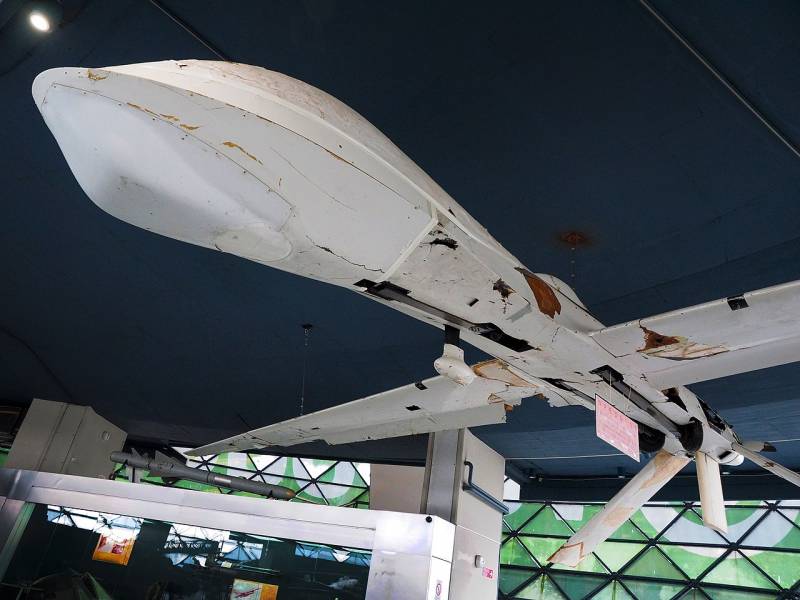
A Predator UAV shot down by Yugoslav air defense at the Aviation Museum in Belgrade
Two features can be distinguished from the bombing of Yugoslavia. The first is the active use of UAVs, which we are gradually arriving at only now – after almost a quarter of a century.
The second is the effective use by coalition troops of electronic warfare (EW) means, and not in the ground version, but in the aviation version. Most likely, it was thanks to electronic warfare that the losses of conventional (not stealth) coalition aircraft were small, while the United States lost the F-117A, most likely precisely because, relying on its stealth, they neglected cover with electronic warfare.
It should be noted that the armed forces of Yugoslavia had only outdated Soviet-made air defense systems; the question is, would the effectiveness of Western electronic warfare systems remain as high if they were countered by the most modern Russian air defense systems at that time? However, this does not diminish the importance of electronic warfare systems for the Air Force.
"Enduring Freedom" (2001)
After all its “achievements” in Iraq and Yugoslavia, the United States imagined itself invincible and, using the terrorist attacks of September 11, 2001 as a pretext, launched an invasion of Afghanistan, well, as they say, “a wise man learns from the mistakes of others, a fool learns from his own, a fool - never". Considering that the US experience gained during the Vietnam War is quite relevant to the Soviet experience gained in Afghanistan, we can conclude which category the US falls into. The war was actually waged against the forces of the Taliban (banned in Russia), who controlled Afghanistan at that time, as they do now.
At first, everything went well - the actions of US special operations forces (MTR) in cooperation with local allies (Northern Alliance) with the full support of US Air Force aviation were successful and effective. Losses were minimal, the advance of the allied forces was carried out quite quickly - it would seem that this is the recipe for an ideal war for countries like Afghanistan.
In Afghanistan, there were virtually no threats to US aviation, of course, when operating from high altitudes, so the US actively used strategic bombers B-1B Lancer, B-2 Spirit, B-52 Stratofortress and used thousands of tons of unguided free-falling bombs, although the use of precision-guided munitions was significant.
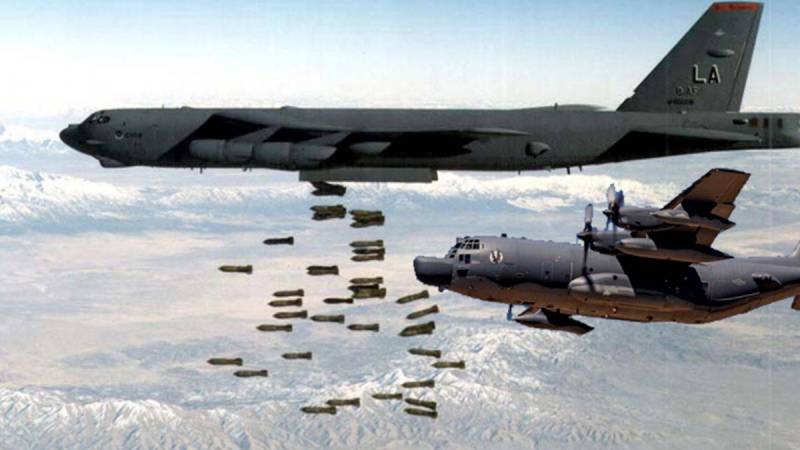
As was the case in Vietnam, strategic bombers operating over areas will be of little use when fighting irregular and dispersed enemy forces
The main open Taliban forces were destroyed from the air within about a month - military bases, airfields with aircraft, supply depots, although this was only the tip of the iceberg. At the same time, Northern Alliance forces captured the country's largest cities, including Kabul, and declared victory.
As was the case with the introduction of a limited contingent of Soviet troops into Afghanistan, this was just the beginning. If 2002 in Afghanistan passed relatively calmly, then in 2003 the Taliban movement regained its strength and began a full-scale guerrilla war against US forces and the new authorities of Afghanistan - the losses of the US and other participating countries began to grow rapidly.
Each individual operation carried out by the United States and its allies, such as Anaconda, Mongoose, Mountain Break, Medusa, and Sword Strike, was almost always successful, but the overall situation became increasingly worse. It got to the point that, due to Taliban attacks on the supply lines of coalition troops, the United States in 2008 asked Russia for corridors for transport aircraft (while simultaneously preparing a strike against Russia in Georgia).
However, the situation in Afghanistan continued to deteriorate for the United States and its allies, and after 20 years of presence on Afghan soil, on April 14, 2021, US President Joe Biden announced the beginning of a complete withdrawal of US troops from Afghanistan, starting on May 1, 2021. On the same day, May 1, 2021, the Taliban launched a large-scale offensive against government troops. As a result, the departure turned into a flight; the United States left weapons and military equipment worth about 85 billion (!) dollars in Afghanistan.
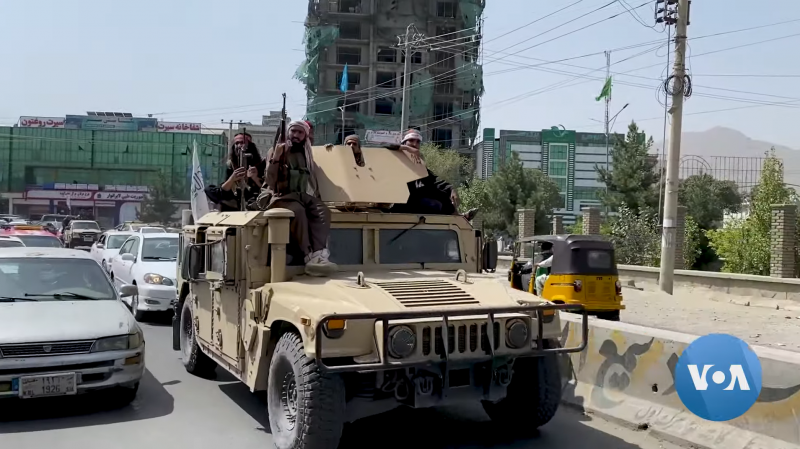
The Taliban are mastering American technology - there is no doubt that it subsequently spread throughout the world, reaching both Ukraine and the Gaza Strip
According to researchers from the American Brown University, the war in Afghanistan cost the United States $2,3 trillion. Also, according to open data, the United States and its allies lost from 7,5 thousand to 12 thousand military personnel, intelligence officers and soldiers of private military companies (PMCs) in Afghanistan, the number of wounded and maimed is in the tens of thousands. The losses of the US Afghan allies amounted to over 66 thousand people - but who is counting them?
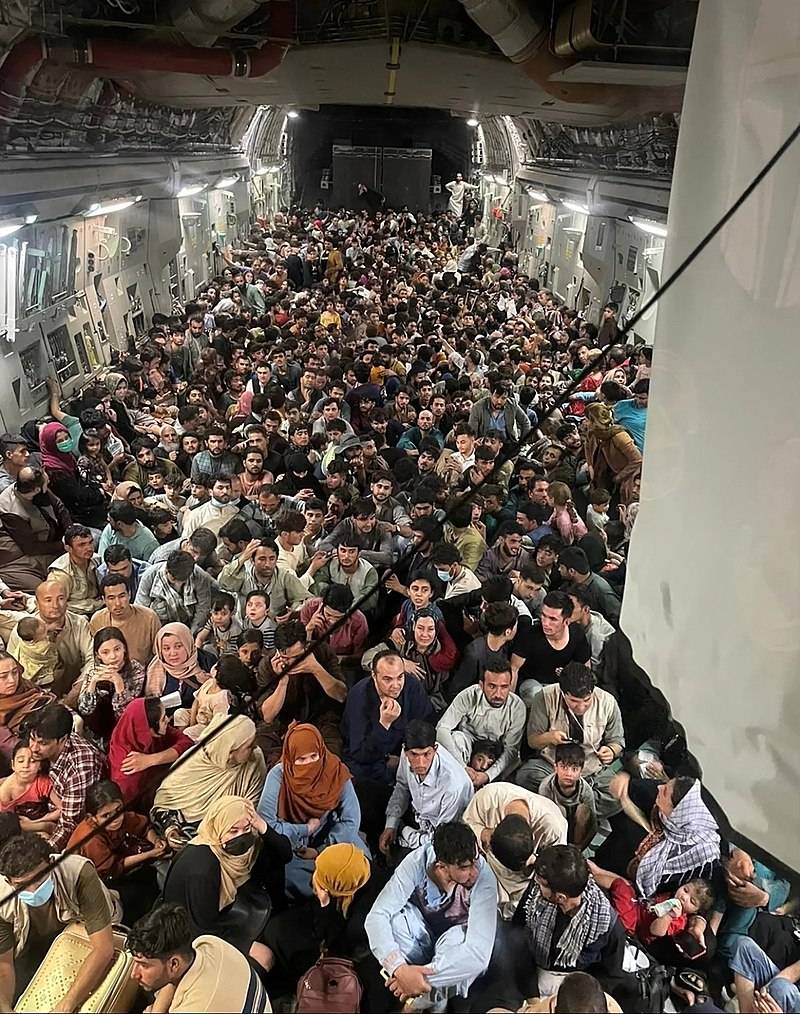
The United States evacuated only a small part of its allies and supporters - it is difficult to say how many were later slaughtered in Afghanistan of those who remained
The American war in Afghanistan showed how strongly the nature of the theater and the type of enemy influence the course of combat operations. Mighty aviation with high-precision weapons turned out to be virtually powerless against the enemy, who essentially uses only portable weapons and lives in a tribal system. In such conditions, victory can only be achieved through a full-scale ground invasion and many years of bloody fighting, for which the United States was clearly not prepared. And the bought and trained allies turned out to be too cowardly and corrupt, although, in principle, it is difficult to expect from them fanatical devotion and readiness to die for the overseas master.
It is characteristic that the United States managed to lose in a situation where none of the other great powers interfered with it - they even helped in any way they could. One can imagine the consequences of what would happen if Russia began to supply the Taliban with intelligence data, air defense systems and modern anti-tank weapons, as the United States did during the entry of Soviet troops into Afghanistan, what losses they would have in manpower and equipment. It’s a pity that we didn’t do exactly that, especially considering the current situation in Ukraine.
It is currently difficult to find the key to a relatively bloodless takeover of a country like Afghanistan, although, of course, some concepts can be formed, however, they are still far from being realized.
One thing is for sure: for now, it’s better not to go into countries like Afghanistan without a good reason.
We will stop there for now; ahead of us are publications about the intervention in Libya, military operations in Syria, the armed conflict in Nagorno-Karabakh, a special military operation in Ukraine and the Palestinian-Israeli conflict.
Information